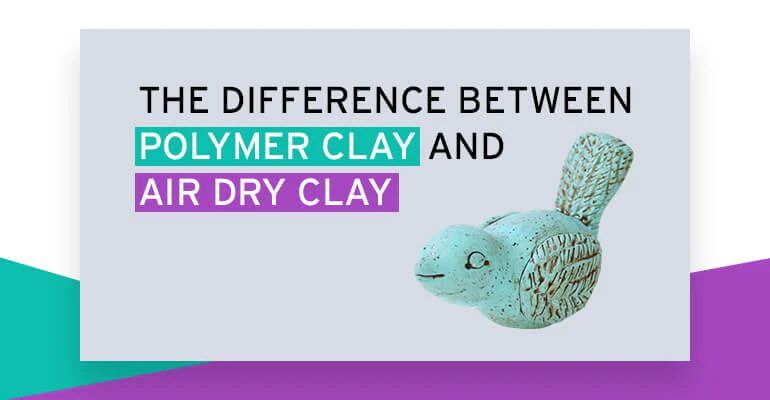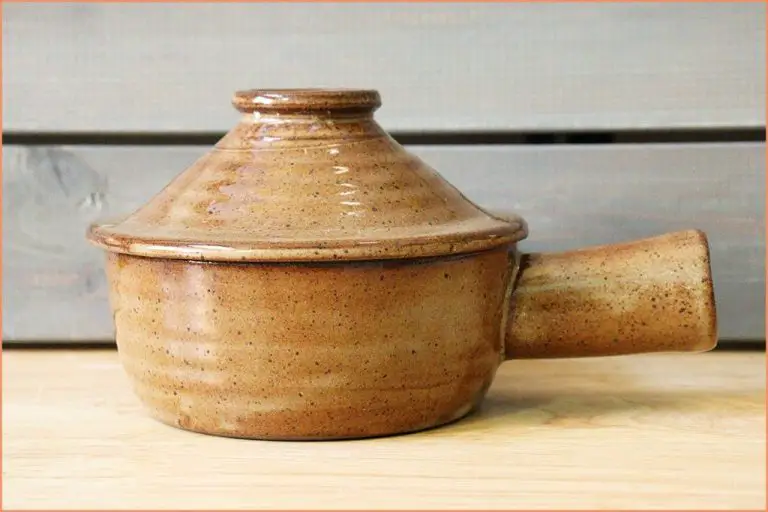What Is The Difference Between Clay And Modeling Clay?
Clay and modeling clay are both materials used for shaping and sculpting, but they have some key differences. Clay is natural material composed of minerals and earth compounds like silica and alumina. It can be shaped when wet, but hardens when dried or fired in a kiln. Modeling clay is made from clay mixed with other ingredients like oils and waxes to be softer and more pliable. Unlike natural clay, modeling clay maintains its pliability even when dry. Both can be used for arts, crafts, and sculpture, but modeling clay is easier for beginners as it doesn’t require firing to harden.
Composition
Clay is a natural material composed of fine-grained minerals such as kaolinite, montmorillonite–smectite, illite, and chlorite. The composition depends on where the clay is formed, but most clay is primarily made up of silica, alumina, and water (ThoughtCo).
In contrast, modeling clay is made from synthetic materials. Basic modeling clay recipes combine ingredients like baking soda, cornstarch, cold water, and sometimes salt or lemon juice. The lemon juice helps harden the modeling clay while the baking soda allows it to harden in air (MamaPapabubba). Commercial modeling clays may also contain polymers like polyvinyl alcohol to improve elasticity and workability.
Plasticity
Plasticity refers to the ability of clay to be molded or shaped without cracking or rupturing. It is the property that allows clay to be worked and formed into different shapes and forms (Plasticity).
Modeling clays like polymer clay or plasticine have very high plasticity, meaning they can be stretched, twisted, rolled, and shaped extensively without breaking apart. This makes them ideal for sculpting and molding detailed objects.
In contrast, natural clays have lower levels of plasticity depending on factors like the clay body composition and water content. While natural clays can be shaped, they become stiffer and more prone to cracking when handled excessively. Potters must be gentler when manipulating natural clay to avoid ruining a piece (Clay Body Plasticity).
The plasticity of a clay depends on multiple variables like the particle size distribution and type of clay minerals present. Clays with smaller particle sizes and more fine-grained minerals tend to be more plastic. Plasticity can also be increased by adding water to hydrate the clay particles (Measuring the plasticity of clays).
Drying & Curing
Clay requires a baking or firing process to fully harden and cure it. After shaping wet clay, it must be fired in a high temperature kiln, which removes any moisture and permanently hardens the material through sintering. Typical firing temperatures are between 600-1200°C depending on the type of clay. The length of firing can range from 4-24 hours. After properly fired, clay has a hard, ceramic finish.
In contrast, modeling clay made from materials like plasticine or polymer clay do not require high heat firing. Polymer based modeling clays will harden and cure at home oven temperatures between 130-150°C, for 15-30 minutes depending on thickness. The polymer chains crosslink and bond when baked which hardens the modeling clay. Air dry clays will harden at room temperature through evaporation over 1-3 days. Longer dry times result in stronger sculptures. Air dry clay can also be baked at 100°C for 30 minutes to speed drying, but still takes 24 hours for full hardness. Unlike real clay, modeling clays do not change their chemical composition when baked, so they lack an impervious ceramic finish.
While polymer and air dry modeling clays make modeling and crafting easier due to the lack of kiln firing, they result in weaker finished objects vs real baked clay. The drying and curing methods reflect the different chemical compositions between clay which requires high heat firing, and modeling clay which relies on simpler hardening mechanisms suited for home use.
(Source: https://www.sculpey.com/blogs/blog/difference-between-polymer-clay-air-dry-clay)
Strength
The key difference in strength between clay and modeling clay is evident once the materials are dried. Traditional clay is very brittle when dried, while modeling clay retains its flexibility and plasticity even when completely dry.
When traditional clay is fired in a kiln, the high temperatures vitrify the clay into a ceramic material that is very strong and durable. However, in its raw dried state, clay is prone to cracking and breaking due to its low strength and brittle nature. Handling dried unfired clay requires care to avoid damaging it (Source).
In contrast, modeling clay is designed to be worked even when completely dry. Brands like Fimo Soft bake into strong, flexible pieces that can bend and flex without cracking. Polymer chains in the modeling clay allow it to retain its plasticity after drying (Source). This makes modeling clay much easier to work with for sculpting detailed objects, as pieces can be handled without fear of breakage.
Uses

Clay and modeling clay have different typical uses. Clay is most commonly used for pottery and ceramics. It can be shaped while wet, then dried and fired in a kiln to harden it into a permanent ceramic material (source). On the other hand, modeling clay is used more for crafts, prototypes, and modeling. It is designed to be shaped easily, but typically does not permanently harden. Modeling clay can be shaped repeatedly without drying, making it popular for sketching ideas and creating crafts (source).
In summary, clay is better suited for pottery and ceramics that require firing and permanency, while modeling clay is preferred for temporary crafts, prototypes, and concept modeling.
Texture
Clay and modeling clay have very different textures and feels. Clay in its natural state is smooth but can be worked to create texture. Modeling clays like polymer clay or plasticine have an inherently smooth, doughy texture.
According to The Art of Education, clay can be textured by techniques like scratching, impressing, carved lines, pressing in objects, or working the surface. The texture depends on the technique. In contrast, modeling clays tend to always be smooth unless textured by hand.
Modeling clays feel soft and malleable at room temperature. The oils and waxes in modeling clay give it a smooth, silky feel. Standard clay feels more dense and earthy. The texture and feel help distinguish between clays meant for sculpting versus clays for firing.
Color
Natural clay comes in various earthy shades like red, brown, grey, and yellow. These colors derive from the natural mineral content in the clay. Modeling clay, on the other hand, is manufactured and dyed to achieve a much wider spectrum of colors. Manufacturers produce modeling clay in bright primaries, pastels, neons, metallics, and more.
According to this source, you can mix modeling clays to create custom colors. For example, mixing equal parts yellow, red, and blue makes a neutral brown. You can also blend complementary colors like orange and blue to tone down the intensity. The variety of modeling clay colors allows artists more creativity and ability to match desired hues in their projects.
Price
When it comes to price, clay and modeling clay can vary significantly. Modeling clays like plasticine tend to be more expensive than basic clays. For example, an 8 lb box of plasticine costs around $46 on Amazon, while a similar quantity of Super Sculpey polymer clay costs $80 (https://www.reddit.com/r/Sculpture/comments/11m66ah/help_cost_of_sculpting_question_polymer_clay_or/). The higher price is due to the oils and waxes added to give modeling clays their smooth, non-drying texture.
Basic clays are often much more affordable, with natural clays like potter’s clay costing just a few dollars per pound. Air dry clays fall somewhere in the middle price-wise. Brands like Crayola Model Magic sell for $5-10 per pound, while higher quality professional air dry clays can cost $15-25 per pound (https://www.susiebenes.com/blogs/airdryclayart/one-clay-to-rule-them-all-air-dry-clays-for-artists).
So while the exact prices vary, in general modeling clays will be the most expensive due to their specialty formulations. Basic clays tend to be the most affordable, with air dry clays in the mid-range.
Conclusion
In summary, while clay and modeling clay may appear similar at first glance, they have some key differences. Clay is an earth material made up of minerals and organic matter, while modeling clay is a man-made product composed of oils, fillers, and preservatives. Clay can be fired in a kiln to become hard and durable, whereas modeling clay always retains its soft, malleable texture. Clay requires more careful drying and curing methods, while modeling clay can simply be left out to dry and reused. Modeling clay has endless creative potential for crafts and art projects, while the uses of clay extend more into pottery and ceramic ware. Both offer sculpting possibilities across a range of temperatures, textures, colors, and prices. While their compositions and properties vary, clay and modeling clay can each provide satisfying tactile experiences for artists, hobbyists, and creators of all kinds.


